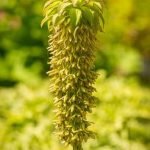Gardening in the desert presents a unique set of challenges, from extreme temperatures to water scarcity. However, with the right knowledge and techniques, it is possible to create a thriving oasis in the arid landscape.
In this comprehensive guide, we will explore the best desert gardening ideas to help you transform your outdoor space into a lush and vibrant paradise. Whether you’re a beginner or seasoned gardener, these tips and tricks will inspire and empower you to embrace the beauty of desert gardening.
Desert gardening offers numerous benefits, including sustainable landscaping, conservation of water resources, and the opportunity to grow a wide variety of unique and exotic plants. By learning how to harness the natural elements of the desert environment, you can create a garden that not only survives but thrives in even the harshest conditions. From choosing the right plants to implementing effective watering techniques, this article will cover everything you need to know to succeed in desert gardening.
Stay tuned as we delve into specific topics such as selecting the best drought-resistant plants, mastering effective watering methods, enhancing soil quality for optimal growth, and creating visually stunning designs tailored to the desert landscape. Whether you’re looking for practical advice on shade and sun protection or seeking guidance on pest control and seasonal maintenance, we’ve got you covered with expert tips and creative ideas for cultivating a flourishing desert garden.
Choosing the Right Plants
When it comes to desert gardening, choosing the right plants is crucial for success. Drought-resistant plants that can thrive in arid conditions are essential for creating a thriving desert garden. Some popular options include:
- Agave: Known for its striking and architectural appearance, agave is an excellent choice for desert gardens due to its ability to store water in its leaves.
- Desert Marigold: This vibrant and hardy plant produces cheerful golden blooms and can withstand the harsh conditions of the desert.
- Yucca: With its spiky foliage and tall, showy flower spikes, yucca adds a dramatic element to desert landscapes while requiring minimal water.
When selecting plants for your desert garden, consider factors such as water requirements, sunlight exposure, and soil conditions. Look for species that are well-adapted to arid climates and low-maintenance needs. Additionally, consider incorporating native plants into your garden as they are naturally suited to the local environment.
To ensure successful plant selection for your desert garden, here are some tips to keep in mind:
- Research different plant species that are suitable for desert gardening and make a list of potential options.
- Consider the specific microclimates within your garden space, such as areas with more or less shade, when planning where to place different plant varieties.
- Visit local nurseries or botanical gardens for expert advice on which plants will thrive in your specific desert climate.
By carefully choosing the right plants for your desert garden, you can create a beautiful and sustainable landscape that enhances the natural beauty of the arid environment while conserving water resources.
Watering Techniques
Desert gardening presents unique challenges, particularly when it comes to watering. With limited water resources and high temperatures, it’s essential to employ effective watering techniques to ensure the health and vitality of your desert garden. One of the key principles of desert gardening is water conservation, making it crucial to use efficient methods that maximize water usage.
Drip irrigation is one of the most effective watering methods for desert gardens. This technique involves the slow, steady application of water directly to the roots of plants, minimizing evaporation and waste. By using a drip irrigation system, you can ensure that your plants receive the necessary moisture while reducing water usage significantly. Additionally, mulching around plants can help retain soil moisture and reduce the frequency of watering.
In addition to drip irrigation, collecting rainwater and utilizing greywater from household sources can be valuable strategies for desert gardening. Rainwater harvesting systems can capture and store precipitation for later use in irrigating your garden. Greywater recycling allows you to repurpose wastewater from sinks, showers, and laundry for watering your plants. These methods not only conserve water but also reduce your reliance on traditional water sources.
Furthermore, timing is crucial when it comes to watering in a desert garden. Watering early in the morning or late in the evening helps prevent rapid evaporation caused by intense midday heat. It’s also important to monitor soil moisture levels regularly and adjust your watering schedule based on weather conditions and plant needs.
| Watering Technique | Benefits |
|---|---|
| Drip Irrigation | Minimizes water waste and ensures direct delivery to plant roots |
| Rainwater Harvesting | Conserves natural water resources and reduces reliance on other sources |
| Greywater Recycling | Repurposes household wastewater for efficient garden irrigation |
Soil Preparation
Understanding the composition of desert soil is crucial when it comes to preparing a successful desert garden. Desert soil is typically sandy and lacks organic matter, which can make it difficult for plants to thrive. However, with the right techniques, it is possible to improve soil quality for desert gardening.
One effective way to enhance the quality of desert soil is by incorporating organic matter such as compost and mulch. These materials help improve the soil structure, increase water retention, and provide essential nutrients for plant growth. Additionally, adding inorganic materials like perlite or vermiculite can help improve drainage in compacted desert soil.
Best practices for soil preparation in a desert garden also include regular loosening of the soil to prevent compaction and allow air and water to penetrate deeply. This can be achieved through the use of hand tools or mechanized equipment such as a tiller. Applying a layer of gravel or rocks on the surface can also help reduce moisture loss and erosion in desert gardens.
Soil preparation plays a critical role in the success of any garden, especially in arid environments like deserts. By understanding how to improve desert soil quality through organic and inorganic amendments, as well as proper cultivation techniques, you can create an environment that supports healthy plant growth and overall garden vitality.
| Desert Gardening Ideas | Soil Preparation |
|---|---|
| Incorporate compost and mulch | Helps improve soil structure and increase water retention |
| Add perlite or vermiculite | Improves drainage in compacted desert soil |
| Regular loosening of the soil | Prevents compaction and allows air and water penetration |
Creative Design Ideas
Incorporating Native Plants and Cacti
One of the key elements in designing a visually stunning desert garden is to incorporate native plants and cacti. These plants are naturally suited to the harsh desert climate and require minimal water, making them perfect for a low-maintenance garden. Consider using a variety of cacti in different shapes and sizes to create interest and texture in your garden. Additionally, native desert plants like agave, yucca, and mesquite can add color and visual appeal to your landscape.
Xeriscaping Techniques
Xeriscaping is a landscaping technique that focuses on water conservation through the use of drought-resistant plants, efficient irrigation, and soil improvement. In desert gardening, incorporating xeriscaping techniques can not only help conserve water but also create an aesthetically pleasing garden. Consider using gravel or rocks to cover bare ground, which helps prevent water evaporation and adds visual interest to your garden.
Utilizing Hardscaping Elements
In addition to plants, incorporating hardscaping elements like rocks, boulders, pathways, and decorative stonework can enhance the overall design of your desert garden. Using these elements strategically can create focal points and define different areas within your garden. Additionally, hardscaping can help reduce maintenance by minimizing the need for watering and upkeep compared to traditional grassy lawns.
By implementing these creative design ideas in your desert garden, you can create a beautiful and sustainable landscape that thrives in the unique challenges of desert gardening. Whether it’s through incorporating native plants, utilizing xeriscaping techniques, or adding hardscaping elements, there are plenty of opportunities to create an eye-catching oasis in the midst of arid surroundings.
Shade and Sun Protection
In a desert garden, creating microclimates is essential for the overall health and growth of your plants. Different areas within your garden may have varying levels of sunlight exposure, heat, and moisture. By strategically placing plants and structures, you can create pockets of shade and cooler temperatures for those that are more sensitive to intense sunlight. Consider using taller plants or small structures to provide shade for heat-sensitive flowers or vegetables.
Additionally, incorporating water features into your desert garden can also help regulate temperature and humidity in specific areas. A small pond or fountain not only adds visual interest but can also help cool the surrounding area through evaporative cooling. It’s important to research the water requirements of each plant in your desert garden, as some may benefit from being placed near these features while others may prefer drier conditions.
In addition to natural elements like larger plants or water features, consider using man-made structures to shield your garden from the harsh desert sun. Installing pergolas, trellises, or shade sails can provide much-needed relief from direct sunlight while adding architectural interest to your garden. These structures also give you the opportunity to grow shade-loving vines or climbing plants that can further enhance the overall aesthetic of your space.
When selecting materials for these structures, prioritize those that provide both shade and ventilation. Light-colored fabrics used in shade sails or breathable materials for pergolas can effectively reduce heat while allowing air to circulate. Incorporating movable shades or umbrellas can also offer flexibility in providing protection where it’s needed most throughout the day.
Pest and Disease Control
When it comes to desert gardening, dealing with pests and diseases can be a challenge due to the harsh environmental conditions. However, there are several natural and organic methods that you can use to effectively manage these issues and keep your desert garden healthy.
To control pests in your desert garden, consider implementing natural predators such as ladybugs or lacewings that can help keep pest populations in check. You can also use insecticidal soaps or neem oil, which are environmentally friendly options for pest control. Additionally, creating a diverse ecosystem within your garden by planting a variety of different species can help naturally regulate pest populations.
In terms of disease management, it’s important to practice good sanitation by removing any diseased plant material and disposing of it properly. Utilizing proper watering techniques and avoiding overwatering can also help prevent the spread of diseases in your desert garden. Additionally, using resistant plant varieties and providing adequate spacing between plants can reduce the likelihood of disease outbreaks.
Finally, taking preventative measures such as regularly inspecting your plants for early signs of pest infestations or diseases can help you address issues before they become major problems in your desert garden.
Overall:
- Implement natural predators
- Use insecticidal soaps or neem oil
- Create a diverse ecosystem within your garden
- Practice good sanitation
- Avoid overwatering
- Use resistant plant varieties
- Provide adequate spacing between plants
- Regularly inspect plants for early signs of infestation or disease
Seasonal Maintenance
In conclusion, desert gardening presents its own set of unique challenges and rewards. With proper planning and implementation of the right strategies, it is possible to create a thriving oasis in the midst of a harsh desert environment.
From choosing the right plants to implementing effective watering techniques, there are many aspects to consider when undertaking desert gardening. By following the tips and ideas outlined in this article, you can create a beautiful and sustainable garden that can thrive in even the most arid conditions.
One of the key factors in successful desert gardening is selecting the right plants that are able to withstand extreme temperatures and minimal water availability. Drought-resistant plants such as cacti, succulents, and other native species are ideal choices for a desert garden. Additionally, implementing water-saving techniques and proper irrigation methods will help conserve water while keeping your garden lush and healthy.
Furthermore, paying attention to soil preparation, creative design ideas, shade and sun protection, as well as pest and disease control are all essential components of maintaining a thriving desert garden throughout the year. By understanding the unique qualities of desert soil and microclimates, incorporating visually stunning design elements, providing adequate shade, employing natural pest management methods, and performing regular seasonal maintenance tasks, you can ensure that your desert garden remains vibrant and resilient even in extreme weather conditions.
Overall, with careful planning and thoughtful execution of these desert gardening ideas, you can create a breathtaking oasis that thrives in even the harshest desert landscapes.

Welcome to my gardening blog! I am passionate about plants and enjoy sharing my knowledge and experiences with others. In this blog, I will write about everything related to gardening, from tips on how to get started to updates on my own garden projects.





